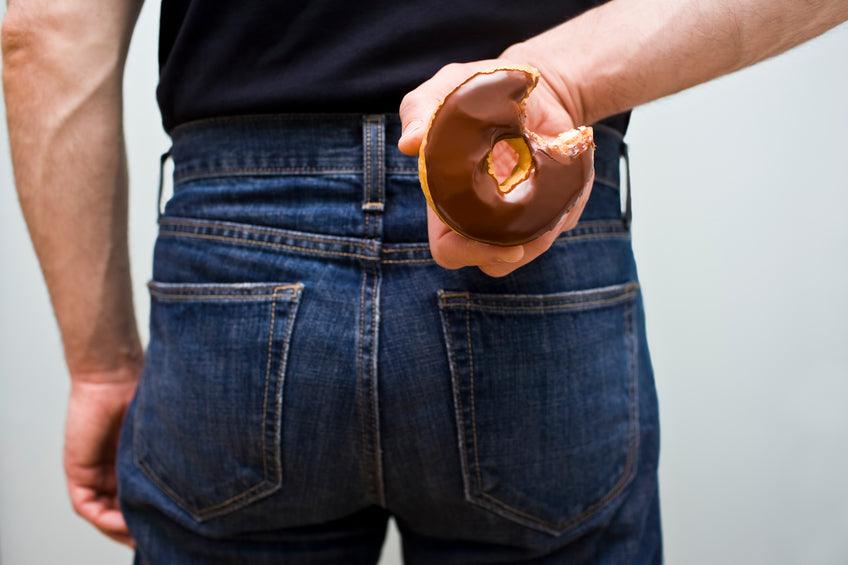

Fat Attack: How to Get Away with a Cheat Meal
Table of Contents
| It happens to all dieters…the craving to cheat. It’s important to realize that the first effect that cheat meals will actually have as you incorporate them into your diet lies with the fact that they aid in boosting your metabolism. Whenever someone is on diet plan for quite some time, the body is going to slow down its metabolic rate as a result. In addition to satisfying your appetite, cheat meals also restore the glycogen level, which is the main source of energy use throughout your workout sessions. According to new research the occasional cheat meal can have a few benefits for the hardcore dieter, such as: |
-Leptin increases. Leptin is a hormone that is produced in fat cells that sends a signal to the brain to suppress food intake and increase energy expenditure. Leptin is reduced by low levels of body fat (body fat actually secretes leptin) and prolonged caloric restriction. A high caloric meal can increases leptin, especially if it’s high in carbs, that spikes insulin can restore leptin levels so that weight loss can resume. Decreased leptin is also associated with increased hunger.
-Thyroid hormone increases. T3, the “active” thyroid hormone, is generally lowered during prolonged calorie restriction. This is normal, and as long as your energy levels are good and weight loss is maintained, a nominally depressed T3 is physiological and expected and nothing to fret over. But extended calorie restriction accompanied by fatigue, malaise, and weight plateaus or gain is a sign of too low a T3. That’s where an acute bout of overfeeding — a cheat meal — can help by restoring your thyroid function to physiological levels.
Here are the latest studies on high fat meals and exercise this month:
Study 1: Eat High Fat After High Exercise for Blood Vessel Protection:
A short burst of intensive exercise before eating a high fat meal is better for blood vessel function in young people than the currently recommended moderate-intensity exercise, according to a new study from the University of Exeter.
Dr Alan Barker, of the Children’s Health and Exercise Research Centre, Sport and Health Sciences at the University of Exeter, said: “Our study shows that the intensity of exercise plays an important part in protecting blood vessel function in young people after the ingestion of a high fat meal. Furthermore, both the boys and girls found the high-intensity exercise to be more enjoyable than the moderate-intensity exercise. Considering that very few adolescents currently achieve the recommended minimum of one hour of at least moderate-intensity exercise per day, smaller amounts of exercise performed at a higher-intensity might offer an attractive alternative to improve blood vessel function in adolescents.”
Performing exercise before a high fat meal is known to prevent this impairment in blood vessel function, but no study has yet identified what type of exercise is best. The study, published in the American Journal of Physiology – Heart and Circulatory Physiology, compared high-intensity, interval exercise against moderate-intensity exercise on blood vessel function in adolescent boys and girls after they had consumed a high fat milkshake. It showed that approximately 25 minutes of moderate-intensity cycling prevented the fall in blood vessel function after the high fat meal. However, performing just eight minutes of high-intensity cycling not only prevented this fall, but improved blood vessel function to a level that was superior to moderate-intensity exercise. If you plan on cheating, make sure that you have an intense workout beforehand.
-Exercise intensity and the protection from postprandial vascular dysfunction in adolescents’ by B. Bond, P.E Gates, S.R Jackman, L.M Corless, C.A Williams and A.R Barker is published in the American Journal of Physiology – Heart and Circulatory Physiology.
 |
Study 2: McDonalds Post-Workout?
In the other shocking news release. If your going to be cycling for 90 minutes than you may be able to cross the finish line and head to McDonalds for your recuperation meal. Researchers reported in the International Journal of Sport Nutrition and Exercise Metabolism that a McDonald’s meal was just as effective as Sports Bars for muscle glycogen replenishment. This should not be a pass to eat McDonald’s after every training session but if your in a pinch, a McDonald’s drive thru may be an effective post-workout for those who did not bring their post-workout meal.
Researchers recruited 11 men to take two, 90-minute exercise tests on a stationary bike followed by a four hour recovery period, where participants either ate sports foods or fast foods during recovery. In this study, sports food included Gatorade, Clif, and PowerBars, while fast foods included McDonald’s hamburger, fries, coke, and hashbrowns. After the tests, researchers collected muscle biopsies and blood samples in order to measure level of recovery, which is dependent upon insulin response, glucose response, cholesterol, and a person’s subsequent workout. Turns out, both types of food similarly aid recovery. While probably not being the healthiest choice, its interesting that both meals provided similar glycogen replenishment levels.
Source: Cramer MJ, et al. Post-exercise Glycogen Recovery and Exercise Performance is Not Significantly Different Between Fast Food and Sport Supplements. International Journal of Sport Nutrition and Exercise Metabolism. 2015.
 Study 3: Cheat Meals Enhance Weight Loss by Increasing Metabolism.
Study 3: Cheat Meals Enhance Weight Loss by Increasing Metabolism.
Previous research has shown that while on a caloric restricted diet, metabolic rate often drops but when a high caloric meal is consumed, metabolism increases. Strict weight loss diet works better if you bend the rules occasionally. A new demonstrates how powerful cheat meals can be to helping you achieve weight loss. The researchers did trials with two groups each of 37 women with a BMI of 25-37. The women were aged between 26 and 50.
-One group followed a traditional – but strict – calorie restriction diet for 6 weeks. The women reduced their caloric intake to 55 percent of their resting metabolic rate. The resting metabolic rate is the amount of calories you burn while at rest.
-The other group followed an even stricter calorie shifting diet (CSD), which consisted of 3 cycles of 2 weeks. The first part of the cycle took 11 days, during which the women ate only 45 percent of the amount of calories their body burned when resting. The second part of the cycle lasted 3 days, during which the women could eat as much as they wanted. The main theory of CSD is to change intake from high to low calories (e.g., to 11 days) to decrease weight, and then change it from low to high calories (e.g., to 3 consecutive days) to keep the RMR at higher levels.
At the end of the 6 weeks the researchers put the women on another diet for 4 weeks in which they were given exactly enough calories to maintain their new body weight. The women in both groups lost the same amount of kilograms. But after they had completed their weight-loss diets, the bodyweight of the women in the calorie restriction diet group
The effect of CSD on RMR was reflected in sustained weight and fat loss and BMI reduction over the follow-up period, something which was not seen in CR treated subjects. This study just goes to show that the incorporation of cheat meals not only mainstain metabolism but its also helped keep weight off over a longer time. The key is to use cheat meals occasionally for effective weight loss.
Davoodi SH, Ajami M, Ayatollahi SA, Dowlatshahi K, Javedan G, Pazoki-Toroudi HR. Calorie shifting diet versus calorie restriction diet: a comparative clinical trial study. Int J Prev Med. 2014 Apr;5(4):447-56.
Consider incorporating fat burning supplements in conjunction with your diet.

















